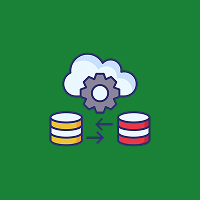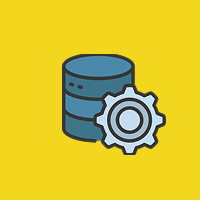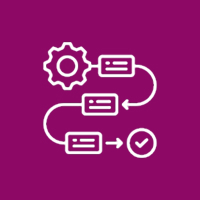Any modern web application requires a dependable method of processing requests, applying business logic, and returning responses. In ASP.NET Core, this is done using middleware – which is how ASP.NET Core handles the entire HTTP request.
Middleware components control how data flows through your application and handle different tasks, including authentication, routing, logging, compression, and error handling. Conceptually, it is helpful to think of them as ‘checkpoints’ in multiple layers, each responsible for a specific detail before passing the request along to the next component in the pipeline.
Understanding how middleware works is not just an academic exercise. Understanding middleware is critical for developing modular, secure, and scalable ASP.NET Core applications to meet real-world workloads. Let’s take a closer look at how the middleware pipeline works and how it is a powerful feature of ASP.NET Core.
What is Middleware, really?
You can think of middleware as the building blocks situated between the client request and the server response. Each middleware is responsible for a specific task in the processing order.
When someone makes a request to an ASP.NET Core web application:
- The request first enters the middleware pipeline.
- The middleware does its logic, such as checking for authentication or routing the request.
- Sometimes, middleware will decide that no further processing is necessary and just return a response.
- After all of the middleware finishes processing, the response takes the same path back to the client.
This chain of responsibility allows for incredible flexibility for developers. By combining middleware together in different orders, you can specify what order requests are processed and how responses are returned.
Understanding the Middleware Pipeline
Applications that use ASP.NET Core are based on a request pipeline architecture. You can think of it as a sequence of connected processors the request makes its way through prior to reaching its destination.
Here’s the basic flow:
- When a client sends a request to your application, the web server (Kestrel, IIS, etc.) receives it.
- The request is then handed-off to the first middleware in the pipeline that you have configured.
A middleware could:
- Pass the request to the next component in the pipeline.
- Terminate the pipeline processing and return its own response.
Once all the middleware has been processed, the response will move through the pipeline in the reverse direction. This will allow each middleware to modify or inspect the response before it is sent back to the client.
This is a simple flow that is designed to provide modularity and control. Developers have the ability to determine exactly what features will run and in what order, thus optimizing performance and behaviors.
The Significance of Middleware Order
One crucial element of middleware to grasp is that order is imperative. The order you register middleware components determines how your application will behave.
For example:
- Authentication middleware should be registered prior to authorization middleware; otherwise, a user may be logged out before their identity is authenticated.
- Routing middleware must execute prior to endpoint execution middleware; otherwise, requests may never reach the intended controller or page.
- Exception handling middleware should be executed first so it, and it alone, will catch and handle any errors that are thrown in the pipeline.
Middleware order and location of items in that order matters because it can make or break an application’s functionality. A failed execution in the order can lead to wrong routing of requests, security concerns, or even performance issues. This is why understanding the request flow is so important to an ASP.NET Core developer.
Common Types of Middleware in ASP.NET Core
ASP.NET Core comes equipped with a variety of built-in middleware components designed to handle common web application needs. Some of the most commonly used include:
- Routing Middleware – Determines how incoming requests are matched to endpoints or controllers.
- Static Files Middleware – Serves static resources like images, CSS, or JavaScript files.
- Authentication and Authorization Middleware – Validates users and enforces access control policies.
- Session Middleware – Manages user session state across multiple requests.
- CORS Middleware – Handles cross-origin requests for APIs and web apps.
- Compression Middleware – Compresses responses to improve speed and performance.
- Error Handling Middleware – Captures unhandled exceptions and displays friendly error messages or logs.
Each of these plays a specific role in the lifecycle of a request. You can use them individually or combine them to create a robust and feature-rich pipeline.
Why Developers Should Consider Middleware
It’s called middleware for a reason – it often goes unnoticed, silently working within the application. However, this invisible character has direct implications for application performance, maintainability, and scalability.
So why is it a big deal?
- Modularity: Adding or removing features is simple; you can add some logging or caching middleware without writing any additional application logic.
- Reusability: Middleware components can be used in multiple applications and environments.
- Security: Authentication, validation, or authorization middleware ensures that only valid requests are handled.
- Performance: Middleware such as response performance enhancements, caching, and compression can significantly improve application performance.
- Centralized Logic: A common cross cutting concern like logging or error handling can be managed all in one location rather than scattered in different controller locations.
Ultimately, middleware provides the flexibility and control commanded in today’s web applications.
Built-in middleware vs. Custom middleware
ASP.NET Core provides an extensive set of built-in middleware to handle most scenarios, but sometimes you will have specific tasks and will need to implement custom middleware.
For example, you may want to:
- Log how long each request took to process.
- Add or modify response headers.
- Filter requests based on specific IP addresses.
- Implement logging behavior and custom error handling logic.
Conclusion
Middleware is the silent powerhouse behind ASP.NET Core applications. It controls the flow of every request, ensuring that security, performance, and logic are handled in a structured and predictable way.
By understanding how middleware works, developers gain complete control over application behavior — from routing and authentication to logging and response optimization. Whether you’re building small APIs or enterprise-grade web solutions, mastering middleware is essential for creating efficient, maintainable, and future-ready ASP.NET Core applications.
In essence, middleware is not just a technical feature — it’s the architectural heart of ASP.NET Core, shaping the way your application interacts with users, manages data, and delivers high-quality experiences.
Contact Us Today













 Database Development
Database Development












































